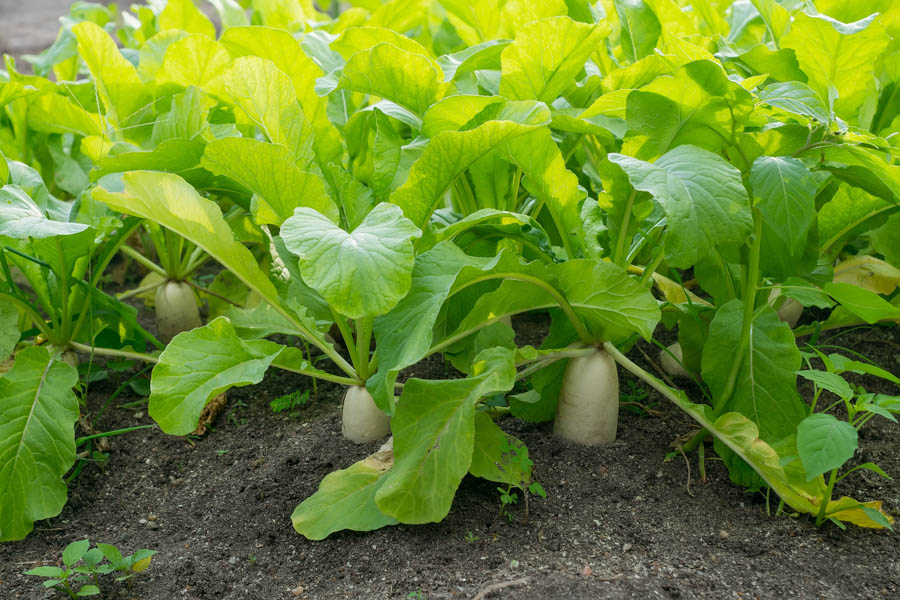Sustainable Gardening: Growing Radishes to Improve Soil

Many gardeners are familiar with radish as a quick and easy cool season vegetable to grow in the garden. They may not think of growing radishes as a sustainable gardening practice that will improve soil.
Try using fodder radishes and daikons as a cover crop, or to break up the top layers of compacted soils in your garden. Broadcast seeds in an area with tough soil, cover with 1/4 to 1/2-inch of sand mixed with compost or fine organic matter, and keep moist for at least 7 to 10 days until a large percentage of the seeds germinate. Radishes should be seeded directly and are easy to grow from seed.
Radishes tolerate difficult soils. Preferred soil pH for radishes is 6.5 to 7.0. Daikon radishes grow best in deep, loose soils, but when used in a sustainable garden to break-up tough soils, they will produce edible roots that quickly become tough in compacted soils.
Harvest roots, leaves, and young seedpods as desired for eating during the windows when these plant parts are palatable. The aboveground radish plant and roots can be harvested as a compost crop, or left in the ground to feed bees and beneficial insects when it blooms, and set seeds for feeding birds and seed-saving.
Radish cover crops can be used in low-till or no-till gardening, and are especially effective in creating root channels in tough soils for crops that follow. GardenZeus expert Darren Butler recommends allowing radish cover crops to go to maturity when possible, saving seeds, then cutting down the expired plants at soil level to use as woody compost material or mulch, and leaving the roots undisturbed to rot in place, feed the soil, and provide root channels for crops that follow.
For complete instructions on growing radish in your area, go to GardenZeus and enter your zip code, then go to radish.
Other articles of interest:
Rats in the California Home Garden
Chlorine, Soil and Watering Gardens
Don’t know your GardenZeus climate zone? Click here.